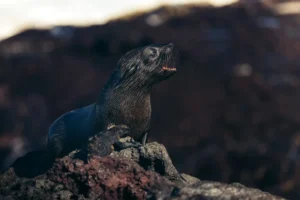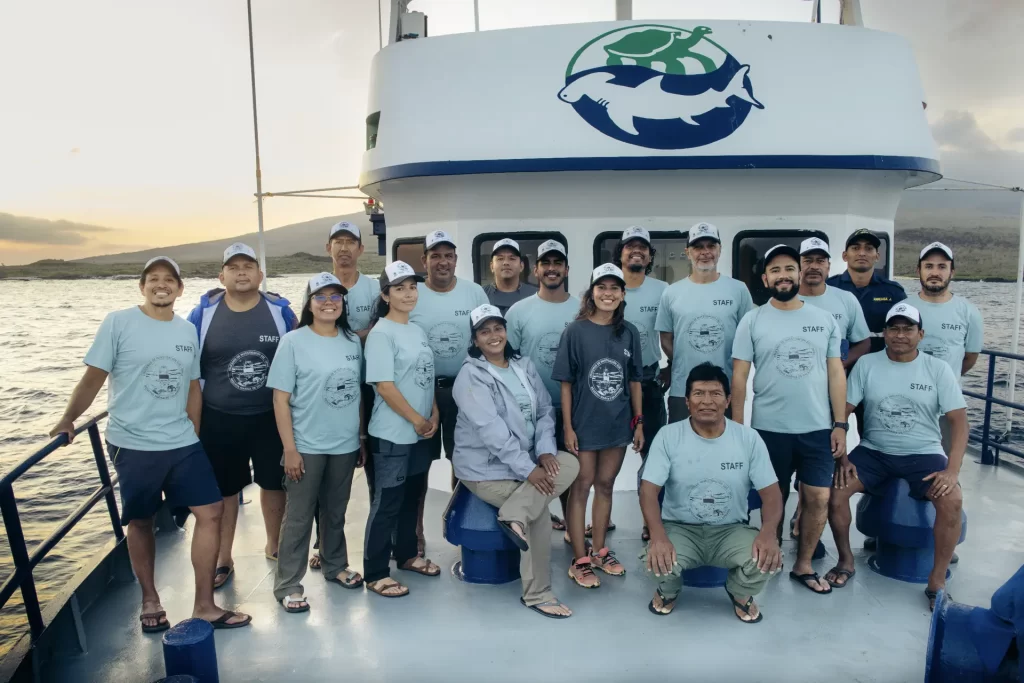Galapagos Conservation has a commitment to conservation of Galapagos species and ecosystems. We support projects which produce valuable scientific data to assist managers in making informed decisions. We support research and conservation efforts for the pinnipeds on Galapagos. Pinnipeds are fur seals and marine lions. Researchers Drs. Diego Paez from Universidad San Francisco de Quito and Marjorie Riofrio, both of Universidad San Francisco de Quito, assess the health status of marine ecosystems in relation to climate change. This research was funded by our conservation grants program.
Pinnipeds undergo annual monitoring and study.

©Galápagos Conservancy
The cruise is a vital part of the pinniped study. The cruise is also a good tool for monitoring and scientific research. This event will be organized by Galapagos National Park Directorate, Universidad San Francisco de Quito and Agency for Regulation and Control of Biosecurity and Quarantine for Galapagos. This year’s Expedition was sponsored by the Galapagos Conservancy and Charles Darwin Foundation. The two-week long expedition took place between March and April.
Scientists and technicians board the ship Sierra Negra, owned by the Galapagos National Park Directorate. Riofrio’s aboard. He is a scientist at the Galapagos National Park Directorate. He visited 14 islands during his trip. He estimated pinniped population at 30 sites.
The team conducted an assessment to determine the growth of Fur Seals and Sea Lions. At each site, animals were captured to collect biological samples such as whiskers and blood. Hair, skin, nasal/rectal samples and other biological specimens were collected. The samples were collected to analyze the diet and health of animals as well as environmental changes.
Riofrio said that the expedition this year was held in the hottest time of the year and not during the peak breeding season for these species. She said that El Nino could have a negative effect on these populations. She said that “this highlights the importance of closely monitoring Galapagos pinniped, and understanding climate changes affecting the existence of these populations.”
The Importance of Pinnipeds in Galapagos for Ecological Purpose

©Galápagos Conservancy
The Galapagos Archipelago is home to many marine animals, including fur seals, sea lions and others. Their behavior can give valuable information about the health of the oceans around these islands. These top predators that eat marine animals and fish may help maintain the food chain. They can alert us to changes in the marine ecosystem and possible threats. The Galapagos eco-system and its survival are dependent on the sea lions.
Your support has a positive effect
Only you can protect Galapagos ecosystems, and help conduct scientific research. We appreciate your support and dedication to protecting the natural beauty of Galapagos. Jorge Carrion, Galapagos Conservation Director, believes scientific research is essential for sound conservation decisions. Galapagos wildlife cannot be protected unless we understand ecosystem dynamics.

©Galápagos Conservancy



